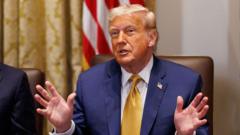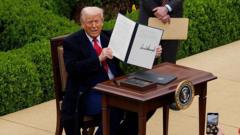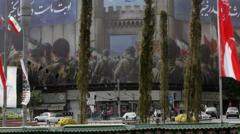Recent disclosures from the National Archives provide insight into the secretive world of espionage and the British monarchy’s handling of sensitive information, particularly surrounding art historian Anthony Blunt's admission.
Queen Elizabeth II Kept in Dark About Soviet Spy Jonathan Blunt for Nearly a Decade

Queen Elizabeth II Kept in Dark About Soviet Spy Jonathan Blunt for Nearly a Decade
Newly released MI5 files reveal Queen Elizabeth II was unaware that a senior courtier had confessed to being a Soviet spy for almost ten years.
In a surprising revelation from the latest tranche of declassified MI5 files, it was disclosed that Queen Elizabeth II was kept in the dark for close to a decade regarding the espionage activities of one of her senior courtiers, Anthony Blunt. Blunt, who held the title of Surveyor of the Queen's Pictures and was responsible for overseeing the Royal Art Collection, admitted in 1964 to being a Soviet agent since the 1930s.
Documents released by MI5 detailed that despite his confession to the agency, the Queen did not receive any official notification until the 1970s. When the news finally reached her, she reportedly reacted "calmly and without surprise," reflecting a persona that was characteristic of her public demeanor.
The delay in informing the monarch was largely due to concerns in Whitehall about the potential fallout if the truth leaked, especially with Blunt’s declining health from cancer and growing public interest from journalists. The espionage suspicions surrounding Blunt had first arisen back in 1951 when fellow spies Guy Burgess and Donald Maclean defected to the Soviet Union.
Blunt’s connection to the infamous Cambridge Five group was further illuminated after a series of interviews with MI5, where he successively denied allegations of espionage, only to later confess under pressure of being promised immunity. His full confession revealed not only his wartime contributions but also post-war contacts with the Russian intelligence services, a development that surprised many, including those at MI5.
Though the investigation was rigorous, information about Blunt's activities was tightly controlled—only the home secretary and top civil servants were informed, and even the Queen's private secretary received limited details. Official discussions about Blunt only reached the Queen’s ears when it was deemed absolutely necessary, with arrangements made to inform her if his health significantly worsened.
Notably, the Queen seemed to have suspected Blunt's duplicity all along, recalling that he had faced scrutiny following the Burgess/Maclean incident. This coincides with insights from Blunt’s biographer, Miranda Carter, who suggested that Elizabeth may have been aware of the situation informally before the official communication took place. This notion aligns with the Queen's immediate, measured response upon learning the facts.
Ultimately, Blunt's spying was publically acknowledged by Prime Minister Margaret Thatcher in 1979, and he passed away in 1983, stripped of his knighthood. The revelations from the latest MI5 files also included accounts from other spies involved in the same era, shedding light on the intricate relationships and tensions within British espionage operations.
As MI5 continues to release its archives selectively, the insights serve as a reminder of the complex interplay between intelligence work and the monarchy, a relationship enshrined in secrecy yet inextricably linked to the history of Britain. The current Director General of MI5, Sir Ken McCallum, emphasized ongoing efforts to provide transparency where possible, in stark contrast to the clandestine nature of its past operations.




















